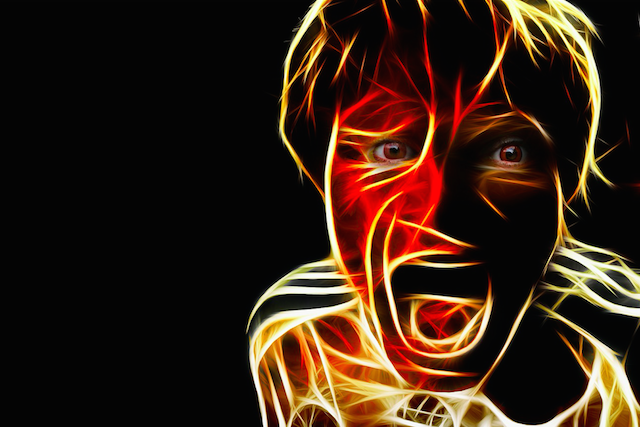Triggers are typically associated with traumatic events, but they can also be used as motivational tools for people struggling with addiction or mental health conditions. In this blog post, we will discuss the neuroscience of triggers: what they are, how they work, when they go wrong, and more!
Contents
What Is Triggers?

Triggers are defined as anything that sets off a particular response in someone. For example, a person who has experienced trauma may have a trigger that causes them to feel extreme fear or anxiety at the sight of a certain object or sound. Triggers can also be positive, such as cues used in therapy to help people stay on track with their goals.
Types of Triggers

There are many different types of triggers, but they can generally be divided into four categories: environmental, cognitive, emotional, and physical.
Environmental Triggers
Environmental triggers include sights, sounds, smells, and textures that remind someone of a traumatic event.
Example: A woman who was mugged at gunpoint in a parking garage may feel anxious when she passes by that particular building.
Cognitive Triggers
When someone has an unwanted thought or feeling, it can be considered to be a cognitive trigger.
Example: A man with PTSD experiencing upsetting memories of the trauma he experienced during the war.
Emotional Triggers
An emotional trigger is an intense feeling that reminds someone of a traumatic event. They could be feelings or emotions that make a person walk down memory lane.
Example: A woman who was raped may experience feelings of fear or anxiety when she feels unsafe, even if it makes no logical sense.
Physical Triggers
A physical trigger can be a sensation that someone associates with an unwanted memory. It can be anything in our environment that causes physiological sensations such as pain or hunger.
Example: A woman who was raped may start to feel panicky when she hears the sound of rain. Because it reminds her of being held down by the water on top of her during the attack.
The Cause Behind Triggers
There is no definitive answer to what causes triggers, but there are several theories that may offer some insight:
Amygdala Malfunctioning
Triggers are caused by a malfunctioning of the amygdala. The amygdala is responsible for the fight or flight response. And it may be that this part of the brain becomes overactive and starts to associate certain stimuli with danger, even if there is no real threat.
Dissociation
Triggers are caused by dissociation. When someone experiences a traumatic event, they may dissociate from the experience to cope. This can lead to the formation of triggers as the person tries to make sense of what happened.
Conditioning
Triggers are learned responses. After a traumatic event, a person may learn to associate certain cues with the danger they experienced. This can create triggers that are unrelated to the original event.
NOTE: Triggers can be caused by several things. Sometimes they are the result of an unfortunate experience such as physical, emotional, or sexual abuse. Other times, triggers develop due to biological factors like genetics and age that make it more difficult for someone with PTSD to manage their feelings.
Use of Triggers

There are many different ways that triggers can be used, both positively and negatively.
Positive Uses of Triggers
One of the most common positive uses of triggers is in therapy. They can be used to help people stay on track with their goals and manage their emotions.
Triggers As Motivational Tools
Triggering can also be used as a motivational tool to help people achieve their goals.
Example: A person who is trying to lose weight may use a trigger to remind them of their goal. Every time they see themselves in the mirror, they may say “I want to be healthy” or keep a picture of their goal weight in their wallet to help them stay motivated.
Example: If a person wants to stop drinking, they may be asked to imagine themselves at a party where everyone is drinking. This can help them stay focused on their goal and avoid the temptation to drink.
Negative Uses Of Triggers
Triggers can also be used negatively by triggering people to act out against innocent bystanders. A person with PTSD may lash out at others because they feel threatened and overwhelmed by their own emotions. But the trigger that is causing these feelings has nothing to do with them.
Triggers As Manipulative Tools
Triggers can also be used as manipulative tools to get people to do what they want.
Example: A person who wants their partner to do something may use a trigger to try and get them to comply. They might start crying or yelling to try and get the other person’s attention.
Example: A person with PTSD may use a trigger to manipulate someone into helping them avoid the situation that they are afraid of. For example, if they were traumatized by their experiences in war, then they might try and convince people that it’s too dangerous for them to go out alone.
NOTE: Triggers can be used in both positive and negative ways. It’s important to be aware of both so that you can avoid the negative consequences and use the triggers in a way that is helpful for you.
When Triggers Can Go Wrong

There are a few instances when triggers can go wrong:
If They’re Not Managed Properly
If someone is not aware of their triggers and how to manage them, they may end up triggering themselves without realizing it. This can be dangerous and lead to dangerous behaviors.
Example: A person with PTSD may see a car driving down the street that reminds them of an accident they were in. Without realizing it, they may start to panic and have a full-blown meltdown.
If They’re Used Inappropriately
If someone uses triggers without consent or knowledge of the person they are triggering, it can be dangerous and harmful.
Example: A person with PTSD may be triggered by the sound of a helicopter. So, if their partner starts flying helicopters without telling them, it can cause a lot of distress and anxiety.
If They’re Used To Manipulate Others
Now, if someone uses triggers to manipulate others and get what they want, it can be harmful and abusive.
Example: A person with PTSD may use triggers as a manipulative tool to guilt their partner into staying in the relationship even if they’re not happy.
Understanding Triggers From Neurological Perspective

The use of triggers in therapy can be traced back to the 1950s when behaviorist B.F. Skinner used them to treat patients with OCD. He would pair a stimulus, such as a sound or an image, with something that the patient enjoyed, like a piece of candy or money. This technique is still used today and is effective in treating patients with PTSD.
Neurological Cause Of Triggering
When a person with PTSD experiences a trigger, it can be due to several neurological factors:
The Amygdala
The amygdala is responsible for the fight or flight response and it may become overactive after a traumatic event. This could lead to the development of triggers.
The Hippocampus
The hippocampus is responsible for making sense of our memories and it may be that a traumatic event causes this part of the brain to go into overdrive. This could lead to the development of triggers as well.
The Prefrontal Cortex
The prefrontal cortex is responsible for impulse control. So if there are problems with this area after a trauma, it can cause someone to act out in ways that could lead to triggers.
Neuroscientists On Triggers
Neuroscientists have a lot to say about the neurological causes of triggers, but they also share their opinions on when and if they should be used in therapy.
“We work with them [patients] collaboratively so that we understand what it is that may bring up some memories or feelings for individuals.” – Dr. Jana Anderson
“When it comes to how we integrate therapeutic techniques into our practice, one has to be very careful with the client’s safety and well-being.” – Dr. Gregory Lakin
Triggers And Therapies

Triggers in Dialectical Behavior Therapy
Dialectical behavior therapy (DBT) is a type of cognitive-behavioral therapy that helps people manage their emotions.
One component of DBT is distress tolerance, which teaches people how to tolerate difficult feelings without using self-destructive behaviors. Triggers can be used as a way to help people tolerate difficult emotions.
Example: A person who is struggling with intense anger may be asked to think about a time when they were really angry. They will then imagine the scene and talk about what happened and how it made them feel. This can help them learn to cope with their anger healthily.
Prolonged Exposure Therapy
Prolonged exposure therapy (PET) is a type of cognitive-behavioral therapy that is used to treat post-traumatic stress disorder (PTSD).
In this type of therapy, the person is gradually exposed to the things that make them anxious or fearful. This can help them learn to cope with the memories and feelings associated with them.
Example: A person who was raped may be gradually exposed to the scene in a safe and controlled setting. This can help them learn to cope with their memories and emotions without becoming overwhelmed by them or triggering a flashback.
Triggers In EMDR
Eye movement desensitization and reprocessing (EMDR) is a type of therapy that has been used to treat PTSD.
In this type of therapy, the person focuses on their traumatic memories while doing some type of repetitive eye movements. This can help them process these feelings to get better.
Example: A person who was raped may be asked to focus on their traumatic memories while doing some type of repetitive eye movements. This can help them process these feelings to get better.
NOTE: However, triggers should never be used in a way that could cause harm or do any damage. This includes taking away the control of someone who is being triggered and forcing them to confront their memories.
Professionals On Use Of Triggers In Therapy

It is helpful for professionals to know when and how triggers should be used:
When they are appropriate
Some feelings can’t always be reasoned away, and sometimes a person needs something that will allow them access to those emotions. So that they can begin to process them.
How they should be used
Professionals should use triggers in a way that is safe and manageable for the patient. This means being aware of the patient’s boundaries and not pushing them too far.
When they shouldn’t be used
There are times when triggers should not be used, such as if the person is actively suicidal or is in a crisis.
Some Basics
When using triggers therapeutically some things need to be kept in mind.
Consent
As with any therapeutic technique, it is important to talk about triggers and get consent before using them. This way the treatment plan can be tailored specifically for each person’s goals while staying ethical.
Duration And Intensity
When thinking of a trigger, you need to consider how long they will last (are we talking about a short or long period?) and how intense they will be.
Creating A Trigger Plan
Once you have the triggers in your mind ready that you are going to use, the next step is to create a trigger plan with your client. This way, both of you know what’s going on and can work together toward each person’s goal.
The Debate
There is some debate over whether or not triggers should be used outside of a therapeutic setting. But most professionals agree that they can be effective when used correctly.
The use of triggers is popular in different types of therapy. For example, someone who experienced sexual abuse as a child may be asked to imagine the scene and talk about what they remember from it during therapy. This can help them work through their feelings surrounding the event without having a full-blown flashback or dissociating.
Using Triggers in Therapy
The triggering can be used safely and effectively in therapy as long as they are handled with care. The therapist will help the person identify their triggers, and then work on slowly exposing them to the stimuli in a controlled setting. This can help the person learn to cope with the memories and feelings associated with them.
Using Triggers Outside Therapy
There are many different ways of using triggers, both positively and negatively. However, there has been some debate over whether or not we should consider employing triggers outside the realm of therapy.
There needs to be a clear understanding of the person who experiences them and never use them in a way that could cause harm. Triggering can be useful and important for individuals and therapists should ensure to use them in a way that is both safe and beneficial.
NOTE: It is important to take into account the comfort levels of the person who experiences them and never use them in a way that could cause harm.
Conclusion
Triggers usually carry a meaning of difficult memories, but they can also help motivate individuals to change their lives for the better. They can be a powerful tool when used correctly, but they need to be handled with care.
Especially, they can be a very helpful tool for those with PTSD, but they must be used carefully so as not to traumatize the patient further. It is important to always respect the person who experiences them and never use them in a way that could cause harm.
If you are looking for affordable Online Counseling MantraCare can help: Book a trial therapy session


